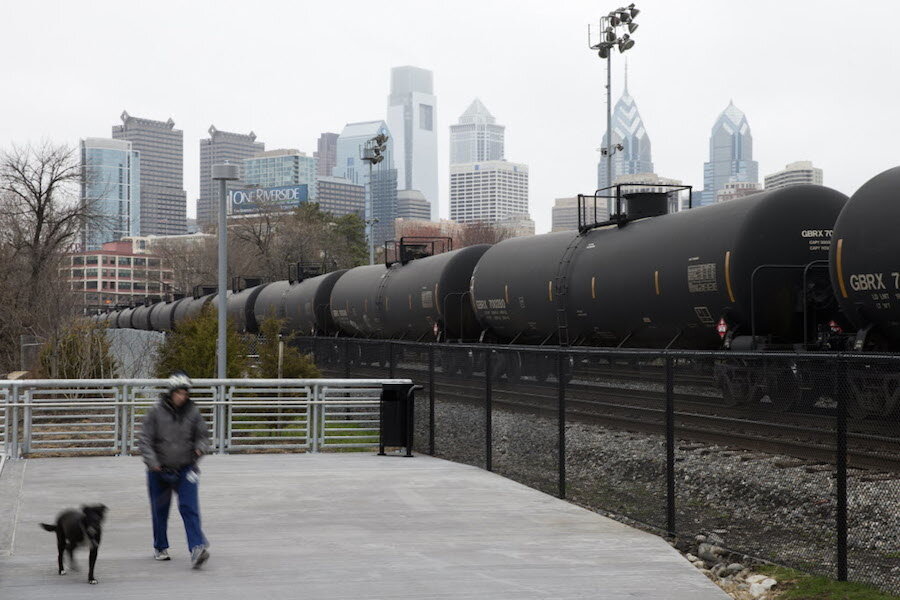Why US oil train traffic is falling
Loading...
Crude-by-rail is no longer growing like gangbusters.
The number of shipments for crude oil on North America’s railways surged in recent years from previously negligible levels. As oil gushed from the Bakken and pipelines couldn’t keep up, the industry scrambled to fill every train car possible with oil, shipping it to U.S. refineries on the East Coast and Gulf of Mexico. (Related: Peak Oil: Myth Or Coming Reality?)
The phenomenon was growing so fast that safety mechanisms could not keep up. A spate of derailments and explosions led to criticisms of the U.S. federal government that it was not imposing enough safeguards. That led to federal regulations this spring intended to make shipping crude less dangerous.
But now, after years of explosive growth, shipping crude by rail has suddenly fallen out of favor. There are a few reasons for this.
First, pipeline construction is finally catching up. Moving crude by pipeline is much cheaper than rail – essentially $12 per barrel via pipeline versus $24 per barrel on the railways. As pipelines come online, rail looks comparatively more expensive. (Related: The Dark Side Of The Shale Bust)
Related to that is the fact that certain grades of crude that traded at a discount relative to the larger benchmarks like WTI are starting to see their prices rise as they gain more access to markets.
For example, Western Canada Select traded at a discount because of a dearth of pipeline capacity, which meant shipping it by rail made sense. But the discount Western Canadian oil has traded for has narrowed (because of more pipelines), making rail shipments no longer cost effective.
Furthermore, oil production is starting to level off, putting less pressure on the existing pipelines. North Dakota saw its output peak in December 2014, and it has ticked down since then. With production slowing, there is less of a need for rail. (Related: Oil Markets Could Be In For A Shock From China Soon)
Overall, oil moving from Canada to the U.S. by rail fell by 28 percent in the first quarter of this year. That is bad news for U.S. rail shipper BNSF, which hopes to see a recovery in shipments after they dropped from a record high of 17,074 carloads in December down to just 13,000 in March.
BNSF’s executive chairman spoke at the EIA’s annual conference in Washington DC on June 15, and said that the recent rebound in oil prices could lead drillers to begin completing wells that they have been holding onto. As those wells are completed, more supplies will lead to more shipments.
But for now, crude by rail is no longer growing like it once was.
By Charles Kennedy of Oilprice.com
More Top Reads From Oilprice.com:
- Why The Oil Rally May Well Be Over
- Peabody Energy (BTU): Time To Pick Up The Knife
- Global Oil Production Substantially Lower Than Believed
Original story: http://oilprice.com/Energy/Crude-Oil/Crude-By-Rail-Falling-Out-Of-Favor.html
Source: http://oilprice.com/





